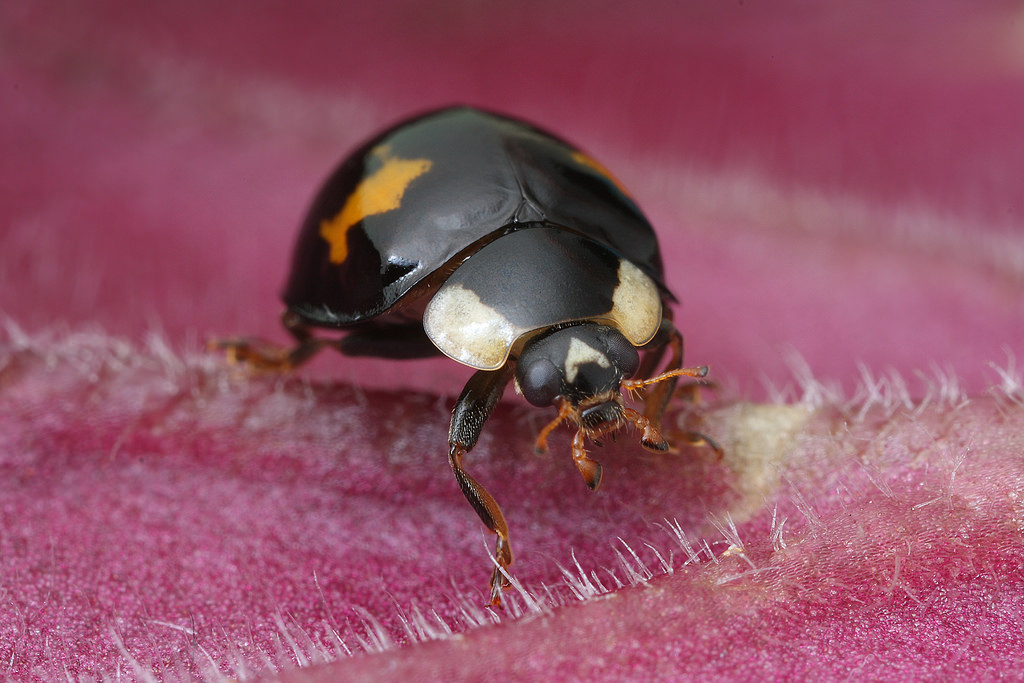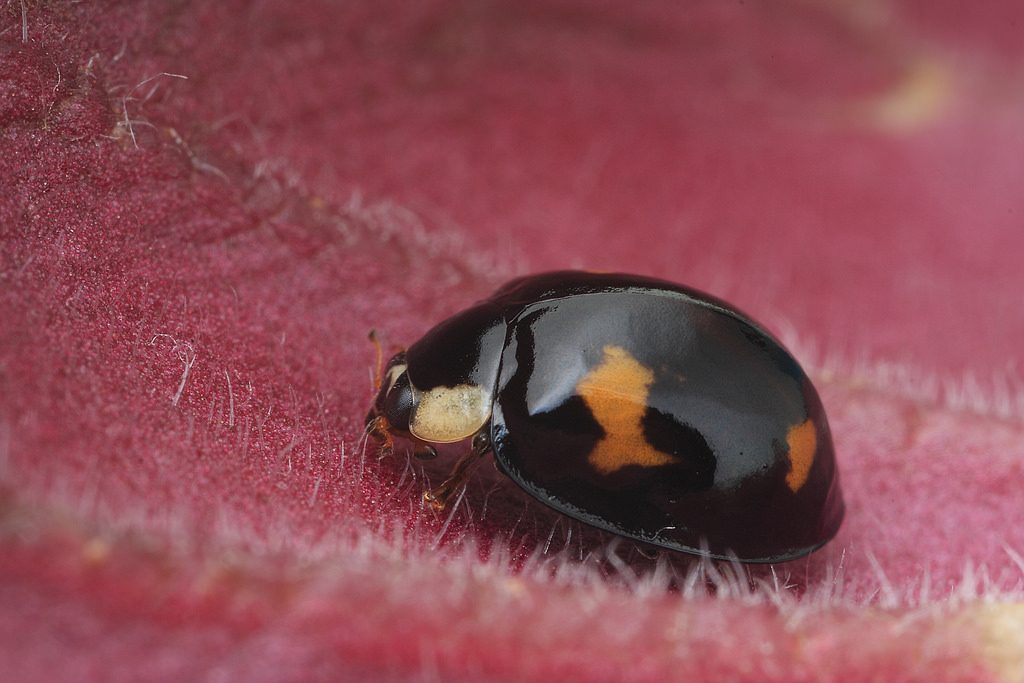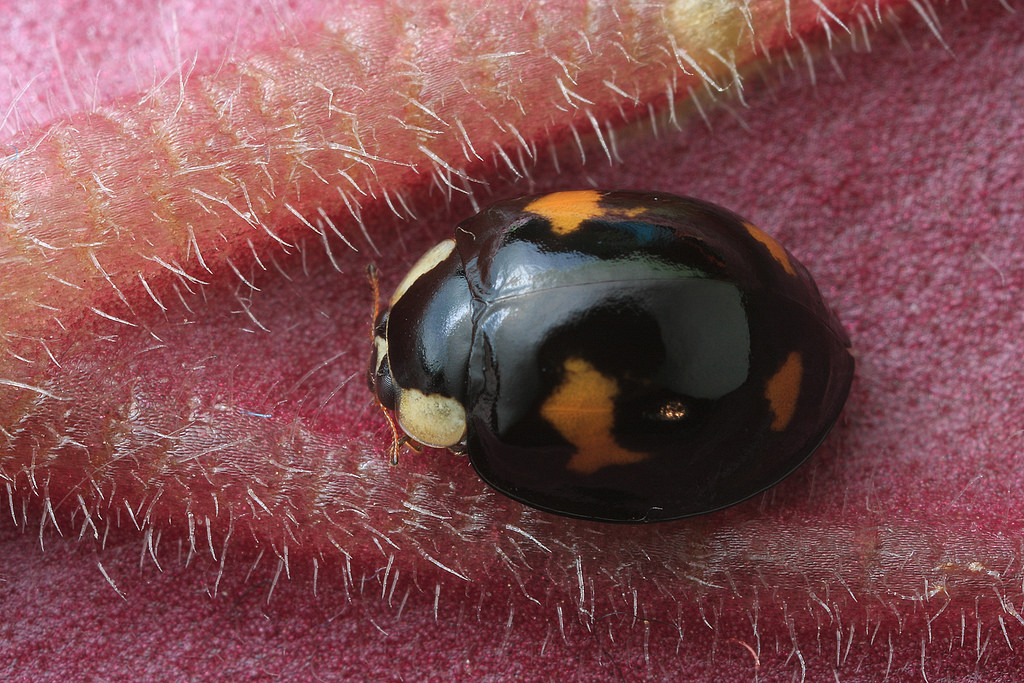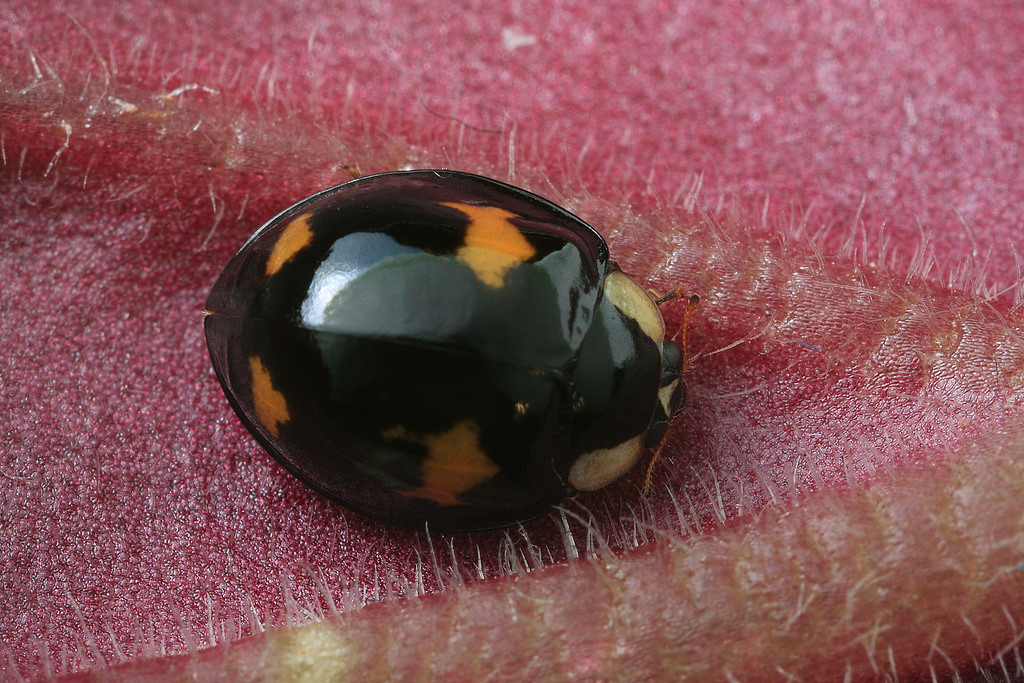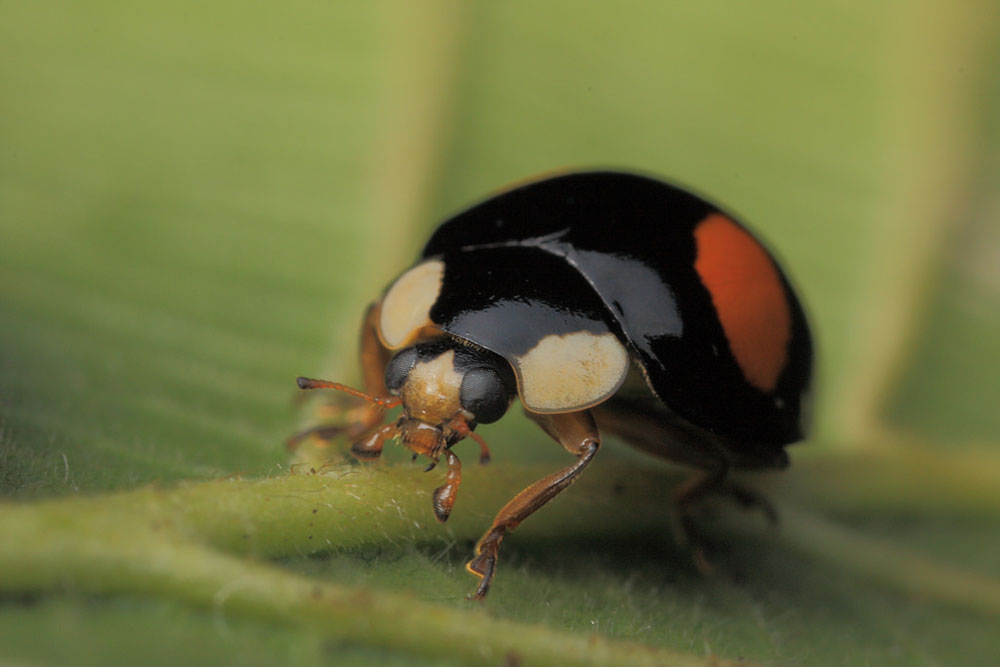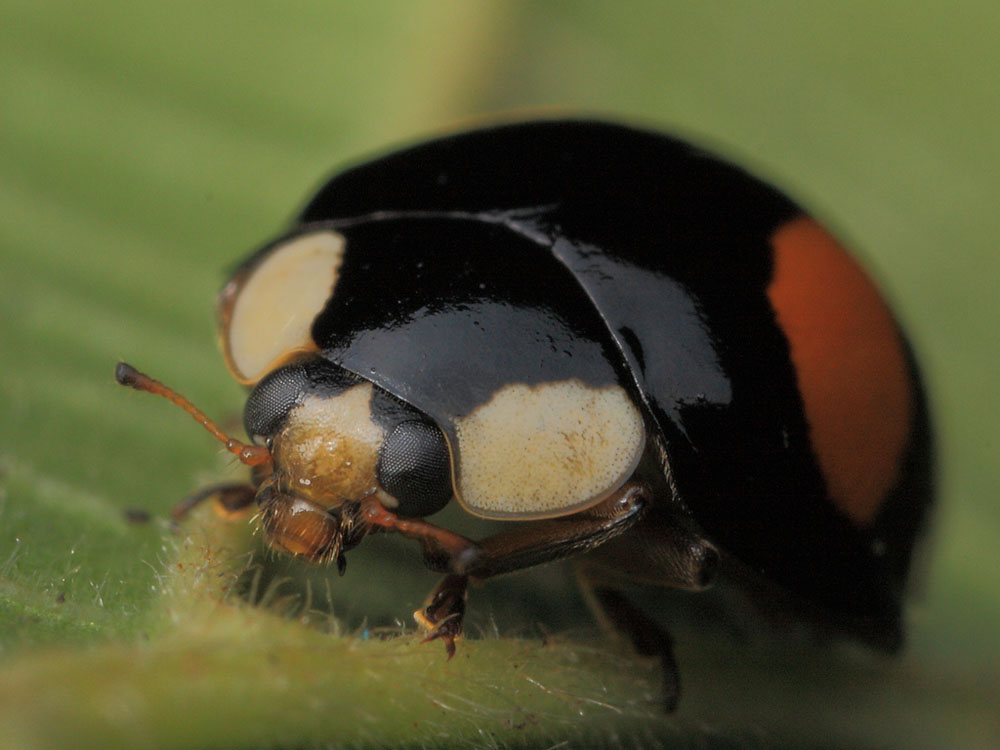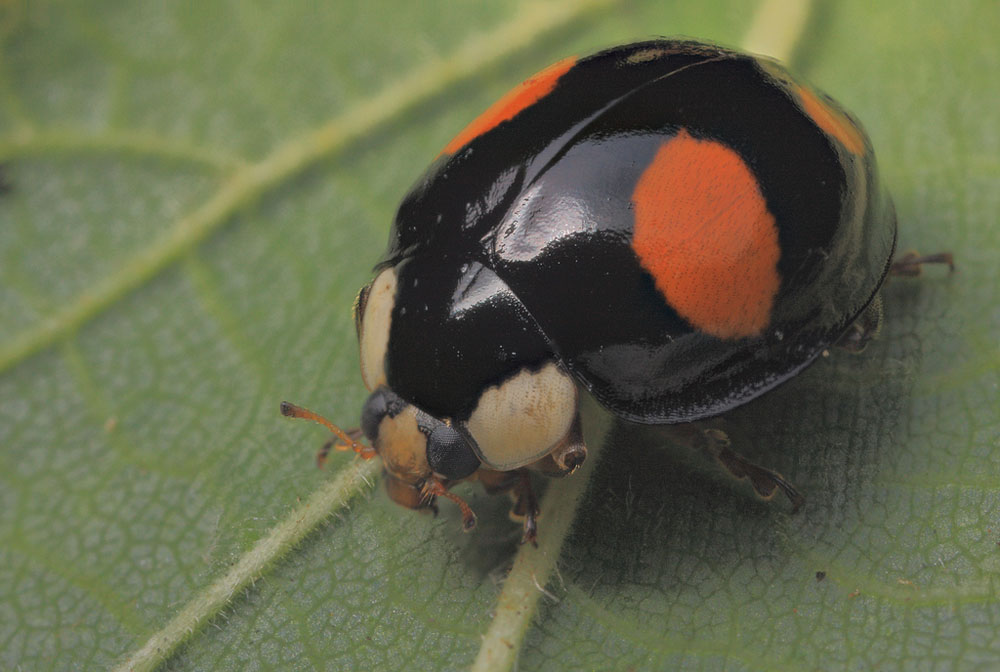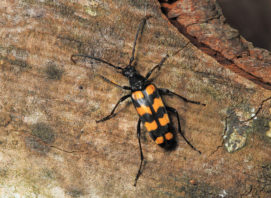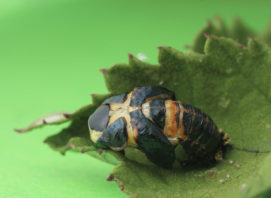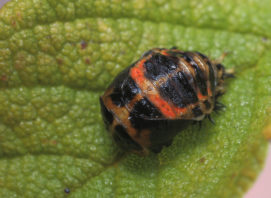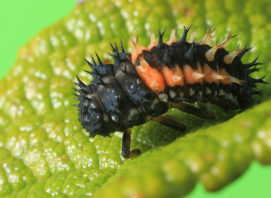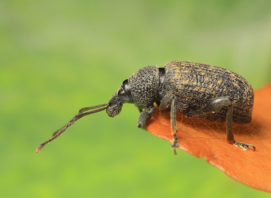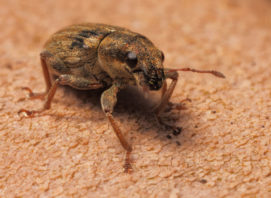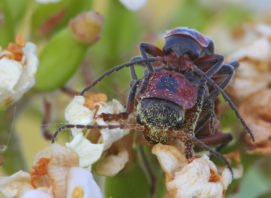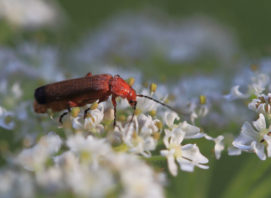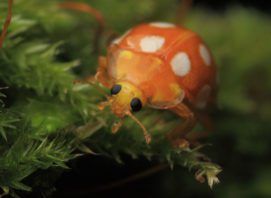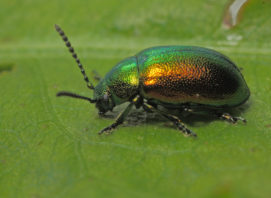Harlequin Ladybird
British ladybirds are under threat from a cannibal species from Europe. The harlequin ladybird, which is now the second most common in the UK, is eating other ladybirds – including the 2-spot and 10-spot – at such a rate, it has become one of the world’s fastest spreading insects.
Since the harlequin was spotted in the UK in 2004 it has bred with astonishing ferocity and there are currently more than a billion. Hundreds of householders have reported plagues inside their homes.
A new study is the first to use DNA analysis to identify prey species in the guts of harlequins showing their ‘damaging effect on native species.’
Originally from East Asia, the harlequin is larger and more voracious than native British ladybirds that have become part of its diet. Although mainly an aphid predator, it is believed to be responsible for the decline of some other ladybirds through competition and cannibalism. In total, 177 larvae were collected from the wild in England, France, Germany, Slovakia and the Czech Republic before being tested.
Three of the four target prey species were detected in the guts of harlequins including the 10-spot ladybird (Adalia decempunctata) found in 9.6 per cent, 2-spot (Adalia bipunctata) in 2.8 per cent and marmalade hoverfly (Episyrphus balteatus), also in 2.8 per cent. The only insect tested for, and not detected, was the green lacewing (Chrysoperla carnea), said the study published in Entomological Science.
Dr Peter Brown, of Anglia Ruskin University in Cambridge, said: ‘This study shows harlequin ladybirds in the wild commonly prey on a number of insects other than just aphids”.
The results offer further evidence the harlequin is a generalist predator which is having a damaging effect on native species across Europe. Ladybirds and other aphid-feeding insects are a very important part of ecosystems – acting as natural pest controllers.
There are 47 ladybird species in the UK – and it’s vital this diversity is maintained. The 7-spot ladybird – the classic red one with the black spots – is still Britain’s most common species, and the harlequin has had little effect on this as their habitats rarely overlap.
‘But other species – such as the 5-spot which is only found in Wales and one or two places in Scotland – could be at risk of eventual extinction because there are relatively so few of them,’ adds Dr Brown.
‘There’s not much we can do to stop the march of the harlequin – our only hope is spiders and some wasps that prey on ladybirds do a better job at catching them. We’re in the hands of Mother Nature.’
In 2003 there were no harlequins in the UK but now they have spread to all parts of the British Isles and are proving deadly to those that cross it. It produces a noxious, foul-smelling chemical that can stain furniture and its bite can trigger an allergic reaction in humans. At around 0.3 inches (7.5 millimetres) in diameter the harlequin is considerably bigger and more aggressive than most native types and will breed several times a year.

